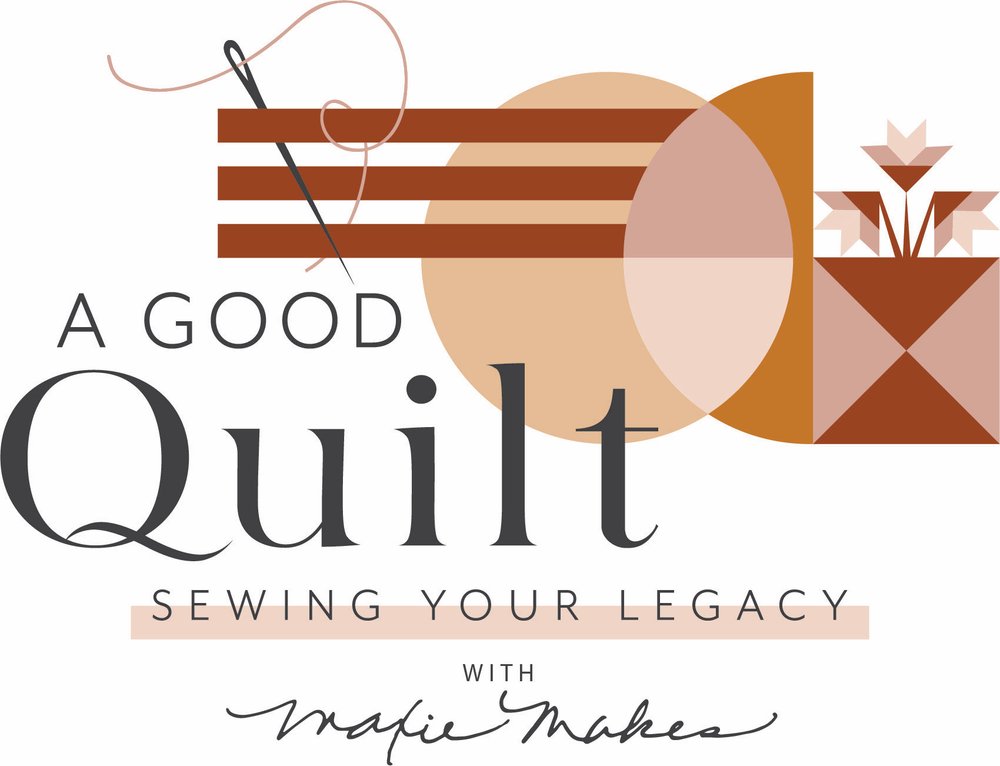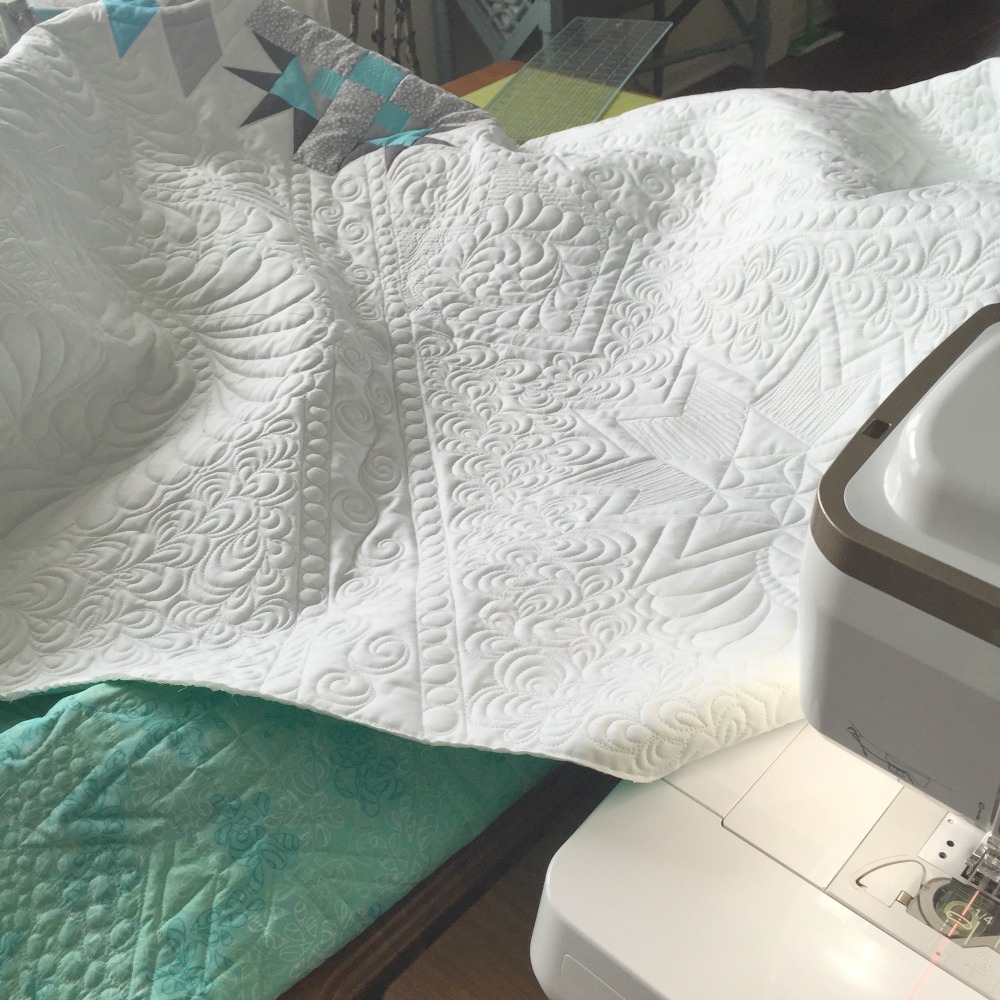I had several sweet comments and email responses to my earlier post this week, On Sharing our Work (Quilts)! Thank you for each one! I thought I'd address a couple of them today. Carole asked how I had planned the quilt design and would I mind sharing that on a future post. I'm happy to share how I map out designs, and I bet all my readers would be interested in your approach as well, so please leave a comment and tell us how you work!
The quilt, "Pinwheel Galaxy", pictured above and in the previous post, is actually my quilt shop's quilt for the 2015 Carolina Shop Hop, which begins July 17. There are 12 participating shops, and each shop designed a star block for the hop, as well as their unique quilt design that includes all 12 blocks.
Now to Carole's questions. "Is your background quilting done on a long arm or standard machine? Do you plan where to put feathers, stars, circles, in your background quilting, or do you start with one placement and let it run, and then see what will fit in the left over space?" I work on a Handi Quilter long arm machine, freehand. I appreciate computerized quilting, but I just enjoy moving that machine myself! As for the planning of the quilting design, I prefer to have a basic idea of what I want to do before loading it on the long arm. I use EQ7 quilt design software to design most of my quilts, which allows me to print copies of the quilt. I print several, and then draw quilt designs over the image to see what might work. For this quilt, I enlisted the help of one of my employees, Sarah, by handing her an image and a pencil and said "go to work on this!". Sarah is so creative and having another set of eyes look at the quilt brought a different perspective to the table.
I knew that I wanted to repeat a few of the star shapes in the white negative space, so I made templates of three of them and drew them, randomly, on the white background fabric. I use an iron off marker for this, and I keep an iron at my long arm machine. As soon as I stitch over the line, I iron it away because it will distract me later if I leave it visible. When you draw a line for quilting, remember that it's only a guide. I rarely stitch right on it! When I quilt a feather, I first draw the spine in the general direction I want the feather to flow, quilt on that guide line, iron it away, and then fill in the feathers. Oh, and my thread of choice is clear Monopoly by Superior Threads.
I tried to quilt each block in a way that might lead out onto the white fabric surrounding it, hoping that the quilting and feathers flowing from the stars would create movement. Smaller areas were outlined with double straight lines and filled in with various elements or background fillers. I use rulers for straight lines, circles and curves wherever I can. I always use a ruler for a circular feathered wreath spine because if the spine is perfect, the wreath will look good even though my freehand feathers are not perfect! (Remember - "Finished is better than perfect"!) I also tried to relate one area to the next in some places, like the circles above the wreath and next to the star block with concentric circles. I used pebbles as a constant theme throughout to help anchor it all together. For sure, some of the designs just had to happen as the space became available. In fact, when I unrolled the finished quilt, I discovered an unquilted area that I had skipped over earlier because I just couldn't decide what to put there! So, I mirrored what was in the opposite corner and it seemed to work.
PMM also had a sweet comment that I'd like to share, "I can't decide whether to contemplate the profound meaning- tightly boxed in at the bottom, stars break free and fly, sort of like you did with your sharing- or just to look in detail at every bit of quilting-piecing-design eye candy. I will enjoy it both ways, I am sure, as will your family. And thank you for your mother's quote- just what I needed...". It made me so happy that she saw those stars breaking loose!
I also have to say that I've learned a lot from some wonderful quilting teachers. You might like to check out the Craftsy Classes by Angela Walters, Christina Cameli, & Cindy Needham. And perhaps my favorite teacher of all is Kimmy Brunner. Remember, it's a process and we never stop learning!
So, how do you plan your quilting designs?
Thanks for visiting! Happy sewing and God bless! Maxie



